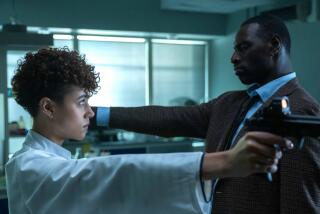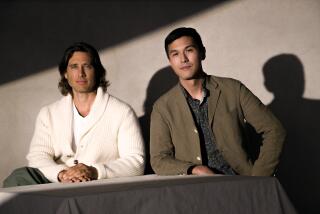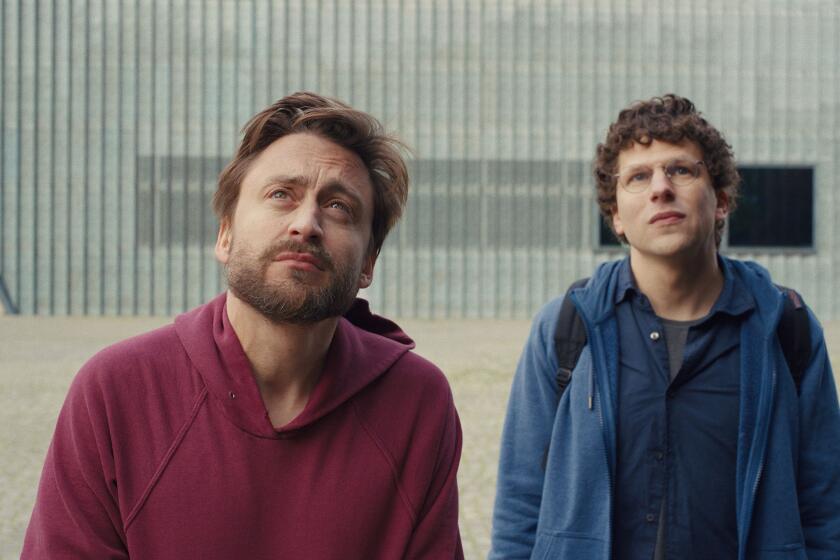Springing to Action
Just when it seemed that the Hollywood action film had reached its nadir, a victim of one too many car crashes and explosions, it has been reborn--with a decidedly Asian flavor.
The prevalence of martial arts and Hong Kong-style balletic choreography in American movies over the past few years has not only refreshed the genre but also made it more accessible to a wider audience, because the violence is less graphic and therefore more ratings-friendly. In addition, action films, which were once almost exclusively the purview of white male protagonists, have become more inclusive, featuring female actors and ethnic minorities in heroic roles.
Though it has been evident in American movies since the first time Bruce Lee kicked his way to cult fame in the ‘60s, the influence of the stylized Hong Kong action genre truly broke through to the mainstream with the Wachowski brothers’ “The Matrix” in 1999, according to many industry observers, revitalizing the way Hollywood approached action in the most significant way since a guy named Bond, James Bond, flicked his first high-tech gadget 40 years ago.
The influence of the Hong Kong style goes well beyond Hollywood. The French-language adventure “Brotherhood of the Wolf,” which opens Friday, is replete with martial arts and balletic choreography. It adds a decidedly modern twist to the 18th century supernatural thriller based on the legendary story of a hunt for the notorious beast of Gevaudan, which terrorized the French countryside in the years preceding the French Revolution.
“Wolf” director Christophe Gans says he deliberately opted for stylized action as a way of bringing contemporary vitality to the movie. “‘Brotherhood’ is about old themes [such as] chivalry, and if you want to talk to young audiences, you have to reference their generation, which is familiar with video games and martial arts,” Gans says.
If “The Matrix,” which used the Hong Kong style in a futuristic sci-fi setting, was the breakthrough, then the 2000 independent hit “Crouching Tiger, Hidden Dragon,” directed by Taiwan-born filmmaker Ang Lee, confirmed its box-office potential for mainstream audiences. (Yuen Woo-Ping did the choreography for both “The Matrix” and “Crouching Tiger.”) Lee based “Crouching Tiger” on his fond memories of watching Hong Kong movies as a boy, and the film plugged into the action audiences’ appetite for martial arts and a quasi-mythological dimension that also informed “The Matrix” and the earlier cult hit “The Crow” (1994), starring the late Brandon Lee.
The Hong Kong style was more than just a genre, encompassing talents as diverse as John Woo (“Hard-Boiled”), Tsui Hark (“Peking Opera Blues”), King Hu (“A Touch of Zen”) and Yuen Woo-Ping (“Iron Monkey”). But it has come to be an all-purpose label for a highly stylized and carefully choreographed manner of dealing with violence and physical action, everything from various kinds of martial arts to swordplay and gun battles. What Bruce Lee did with his fists of fury, Jackie Chan accomplished with his acrobatics and Chow Yun-Fat with bullets.
Elements from Hong Kong films first began to surface in American movies such as Ridley Scott’s 1989 film “Black Rain,” says director Peter Hyams, who then used them in his own 1994 film “Timecop,” starring Jean-Claude Van Damme, and more recently in last year’s “The Musketeer.”
The use of Hong Kong-style action provided a justification for revisiting Alexandre Dumas’ swashbuckling, much-filmed “Three Musketeers” tale, Hyams says. He was less interested in the martial arts element than in the balletic choreography, which enhanced and revitalized the swordplay sequences.
“As with the Hong Kong films, it’s breathtaking and also cartoon-like,” Hyams says. “It allows the audience to sit back and be amused by the athleticism and the beauty of the choreography.”
The popularity of video games among the young generation of filmgoers also helped set the stage for the acceptance of martial arts and Asian-influenced action, says film critic David Chute, who has written extensively about Hong Kong films.
“Since many of the games were designed in Japan, it was a way of acclimating [U.S.] audiences to that kind of movement and to Asian-looking heroes,” Chute says. That helped pave the way for crossover stars like Jackie Chan and Jet Li and for the importation of Hong Kong talents like John Woo.
Since “The Matrix,” stylized Hong Kong-style action has permeated American movies from “Mission: Impossible 2” (directed by Woo) to “Charlie’s Angels” (choreographed by Hong Kong veteran Yuen Cheung Yan) and “Lara Croft: Tomb Raider” (which is based on a video game). Elements even pop up in films as diverse as “Ocean’s Eleven” (in the acrobatics of actor Shaobo Qin) and “The Lord of the Rings: The Fellowship of the Ring,” in the kinetic bouncing-off-the-wall battle between Gandalf (Ian McKellen) and Saruman (Christopher Lee).
Proof of how well-known the Hong Kong style is today comes from the fact that it is ripe for spoofing in films like “Shrek,” “Scary Movie 2” and Steve Oedekerk’s comedy “Kung Pow: Enter the Fist,” which opens Jan. 18.
For Oedekerk, the film is as much homage as a sendup. He has been a fan of Hong Kong movies since the ‘70s. He says that the continuing fascination with Hong Kong movies emanates from the athleticism of the violence. “It’s very much like watching a sport. Movies like ‘Crouching Tiger’ then took it to another level in which you wondered, is it fighting or is it ballet? It’s a wonderfully expressive art form.”
The popularization of the Hong Kong style arrived in the nick of time for Hollywood, says Los Angeles Times film critic Kenneth Turan. The bone-crunching, bloody nature of the action genre had not only peaked creatively but its excesses were also coming under attack from Washington. Stricter enforcement of the R rating also made gore-fest films less economically viable. The new stylization “allows Hollywood to have its cake and eat it too,” says Turan.
At the same time, the Hong Kong style has broadened the audience for action movies. Hollywood has repeatedly tried and failed to create viable female action heroes. The mixture of women and guns never quite jelled on the big screen. But when it came to making a film version of the popular “Charlie’s Angels,” producer Leonard Goldberg says that martial arts choreography was the perfect blend of subject matter and style. .
“‘The Matrix’ raised the bar,” says Goldberg. “We knew we had to reach for a new kind of action. You couldn’t just shoot people and have standard stunt fights.”
One of the hallmarks of the Hong Kong style is a mixture of action and comic absurdity. And when Goldberg previewed “Charlie’s Angels” for audiences, the combination of humor and fluid movement received high marks from audiences, who accepted and applauded the female stars’ physical prowess.
It has also taken the sting out of violence, allowing more action films to be rated PG-13 instead of R, enabling Hollywood to market these movies to the all-important core teenage moviegoer. On the other end, segments of the older audience who were turned off by hard-edged action have also become converts to this new style.
“It’s not as threatening as gunplay,” Hyams says. “You’re not killing or maiming people. If it wasn’t true before Sept. 11, it’s now safe to say that shooting people is not amusing. When people leap into the air and spin, you don’t take it quite as seriously. It’s like telling the audience they don’t have to worry.”
Now that it’s reached critical mass, however, directors like “Brotherhood of the Wolf’s” Gans wonder how movies can sustain these stylized elements without descending into parody. Hyams and others contend that it will probably become a staple, though Hollywood is unlikely to abandon car chases and gunplay.
In his next film, Gans plans to combine movement with magic as a way of evolving the style. And Goldberg is working hard to make sure that the “Angels” sequel and his upcoming “Wonder Woman” film credibly evolve the style. “We can’t do what we did before. We have to continue to push the envelope,” Goldberg says.
The Hong Kong style will continue to develop because it is part of a tradition of physical action that is as old as movies themselves, Gans believes. “If you look at Buster Keaton or Douglas Fairbanks movies, what still amazes you today is their physical ability,” Gans says. “The only special effects that never grow old are what you can do with the human body.”
More to Read
Only good movies
Get the Indie Focus newsletter, Mark Olsen's weekly guide to the world of cinema.
You may occasionally receive promotional content from the Los Angeles Times.










